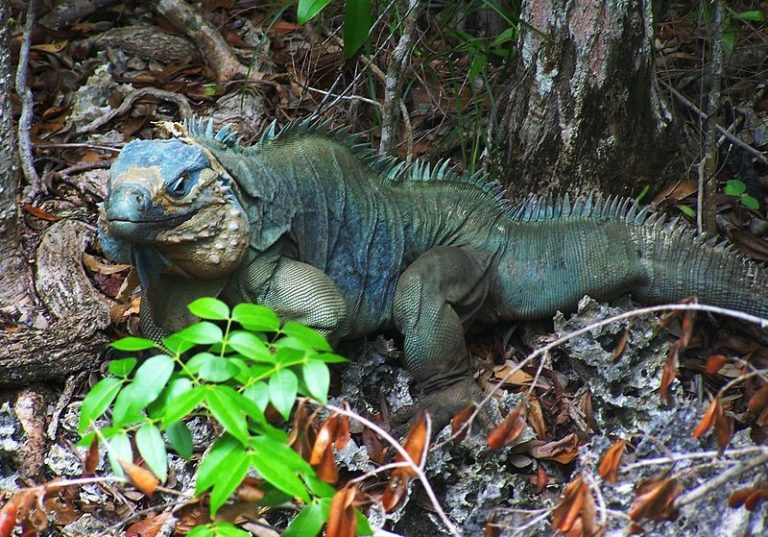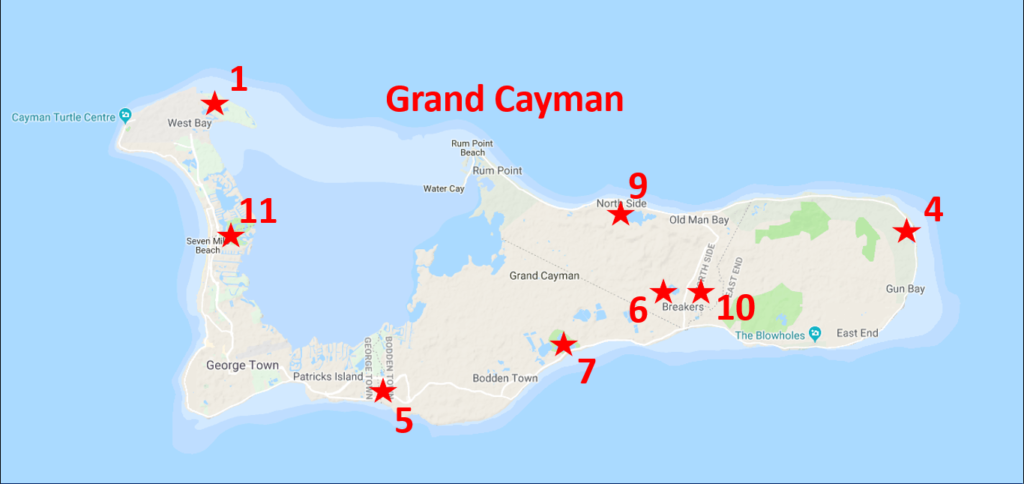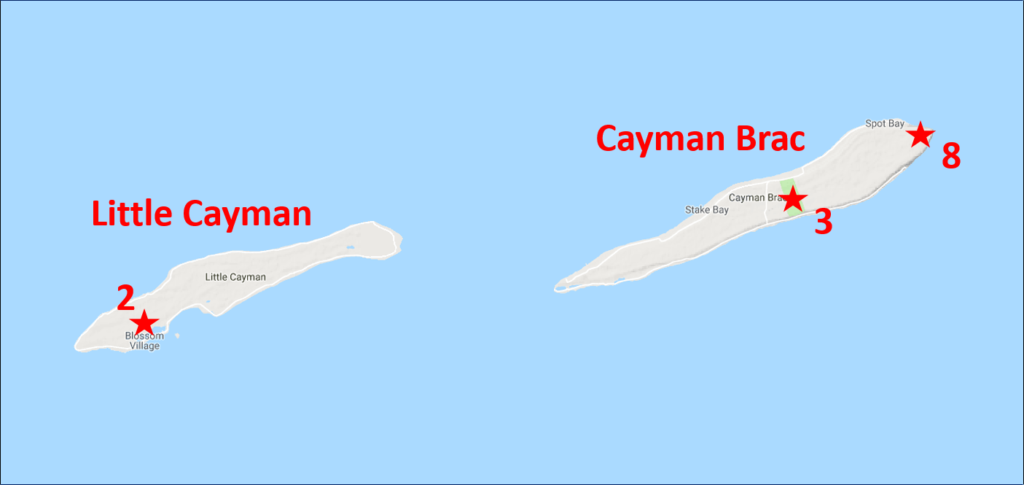The Avitourist’s Guide to the Cayman Islands

Crystalline waters of Seven Mile Beach, Grand Cayman.
The Cayman Islands are an appealing destination for vacations that combine seaside recreation with ecotourism, known for their crytalline waters and rich marine life. As an overseas territory of the U.K. and offshore banking hub, the Caymans enjoy modern conveniences and a minuscule crime rate, making travel there as worry-free as anywhere in the developed world.
Wildlife highlights of the islands include the Blue Iguana (the largest lizard in the Western Hemisphere—see below), Vitelline Warbler, Grand Cayman Bullfinch, and a handful of other endemic birds that are not currently recognized as separate species but are distinctive enough that they have the potential for future recognition. For more information on the birds, see Birds of the Cayman Islands.

Blue Iguana, Queen Elizabeth II Botanic Park, Grand Cayman.
Most travelers visit only Grand Cayman, home to over 95% of the islands’ human population. A large proportion visit for financial conferences or on port-calls during western Caribbean cruises, both of which typically afford a few spare hours for excursions. Fortunately, most of the Cayman Islands’ avian specialties can be found efficiently at any of three easily accessible locations on Grand Cayman (sites 6, 9, and 10 on the map below).
The other islands, Little Cayman and Cayman Brac, are about 100 miles east of Grand Cayman. The local airline makes several daily flights to both.
Brief overviews of each island’s avian attractions are provided below, along with links to detailed accounts of certain locales. For more detailed logistical guidance, see Travel to the Cayman Islands.
Cayman Islands – Orientation Map


2 – Booby Pond Sanctuary, Little Cayman
3 – Brac Parrot Reserve, Cayman Brac
4 – Colliers Pond
5 – Governor Gore’s Bird Sanctuary
6 – Mastic Trail
7 – Meagre Bay Pond
8 – Northeast Point, Cayman Brac
Grand Cayman
To find Grand Cayman’s endemic birds and range-restricted specialties, the most efficient approach is to visit Queen Elizabeth II Botanic Park (a.k.a. Botanic Park, Site #10) which requires about five hours total, including the drive from George Town and back. Another efficient approach is to visit the nearby Mastic Trail (Site #6) instead. Under good field conditions, two or three hours of focused effort at either site should produce all six Cayman endemics and most of the island’s other characteristic landbirds. The same set of species, and more, can be found in the North Side area (Site #9), which is best undertaken as a full-day excursion. During an extended stay on the island, several other locations are also worthy of attention, but are not likely to produce all of the endemics.
Little Cayman
Little Cayman has a single standout avian attraction: the Red-footed Booby breeding colony in the Booby Pond Nature Reserve (Site #2), which is conveniently located within walking distance of the airport and the island’s hotel strip. The sanctuary is also home to about 200 pairs of Magnificent Frigatebird. Little Cayman does not support any landbirds that can’t be found on the other islands, but it does have a population of the Brac subspecies of Vitelline Warbler. It is possible to visit Little Cayman as a single-day, round-trip excursion from Grand Cayman (by air) or Cayman Brac (by air or boat).
Cayman Brac
Cayman Brac supports endemic subspecies of “Cayman Parrot”, Western Red-legged Thrush, Greater Antillean Grackle, and Vitelline Warbler. (Most of these have occurred on Little Cayman as well, but only the warbler is currently known to be established on both islands.) The prime area for most of its landbirds is the Brac Parrot Reserve (Site #3), along with nearby roads that traverse the interior of the island. The high bluffs at Northeast Point (Site #8) have breeding colonies of Catesby’s Tropicbird and Brown Booby. The island’s peculiar name derives from this topography—“brac” is a Gaelic term for a cliff or bluff.
Beach Vacations
Grand Cayman is a solid choice for a vacation whose primary purpose is seaside relaxation but includes an avitourism component. The famous Seven Mile Beach is just one of many options on the island for pleasant enjoyment of the Caribbean climate, and it is walking distance from a fairly interesting site, Safehaven (Site # 11), where “White-winged Barn Owl” can be found with a little luck. All of the Cayman endemics and most of the other noteworthy birds of the islands can be found fairly easily through an excursion or two to Botanic Park (Site # 10), the Mastic Trail (Site # 6), or North Side (Site # 9).
Cruise Port-Calls
Most western Caribbean cruises stop at George Town, where a typical port-call should afford enough time to rent a car and visit either Botanic Park (Site # 10) or the Mastic Trail (Site # 6) for two to four hours on-site and have a reasonable opportunity to find all of the Cayman endemics and several other local specialties.